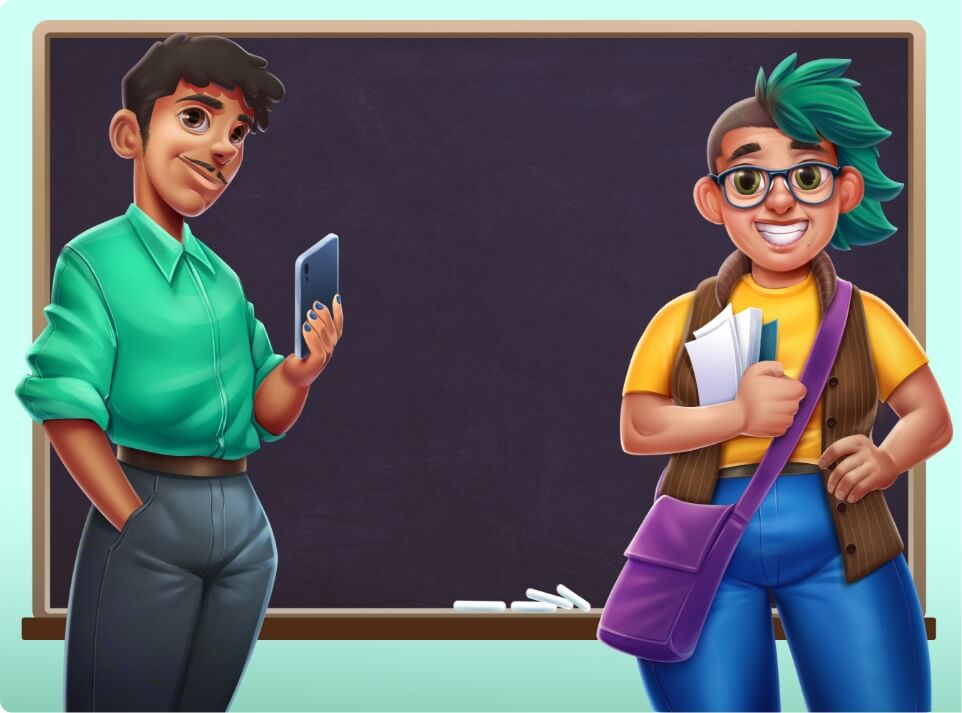Shoelace’s Reading Comprehension Skills
Skill Categories
Shoelace’s reading comprehension platform is built on a foundation of over 100 reading comprehension skills.
We categorize all skills in two ways. The first is by the type of skill (for example Literary Elements or Parts of Speech). The second is by whether the skill will be practiced in isolation. For this, we categorize them by what we call standalone or passage skills.
Standalone skills can be assessed without an accompanying passage. Skills that fall into this category include types of figurative language (e.g. Metaphors), parts of speech (e.g. Synonyms), and forms of sentence structure (e.g. Declarative Sentences).
Passage skills require students to read a passage in order to select the right answer. Our passages span a wide range of genres and include both fiction and nonfiction. Many of our skills can be used across all genres (such as Summarizing), but we also include skills specific to fiction (e.g Character Identification) and nonfiction (e.g. Counter Arguments) genres.
Many skills don’t fall neatly into one bucket or the other. For these skills (like Metaphors), students will encounter questions on them in both situations.
As students play, the learning engine will present a mix of standalone and passage skills. If you want your students to focus on specific skills, you can do so with the assignments feature in the teacher dashboard.
Skill Tiering
As part of our new learning engine, we’ve developed a simple tiering system for tracking student progress on mastering individual skills. The new tiering system was designed to better ensure that students receive questions at their appropriate skill level, allowing them to work independently. It also provides better insights for educators as to individual students’ strengths and weaknesses that can be especially useful when forming strategy groups in their classroom. There are three question tiers for each skill.
All students start at Tier 1: Learning. In this tier, questions are designed to provide full information about the skill being assessed. For example, a Metaphor question will include a definition of a metaphor. The goal of tier 1 is to introduce students to the skill and get them familiar with the concept.
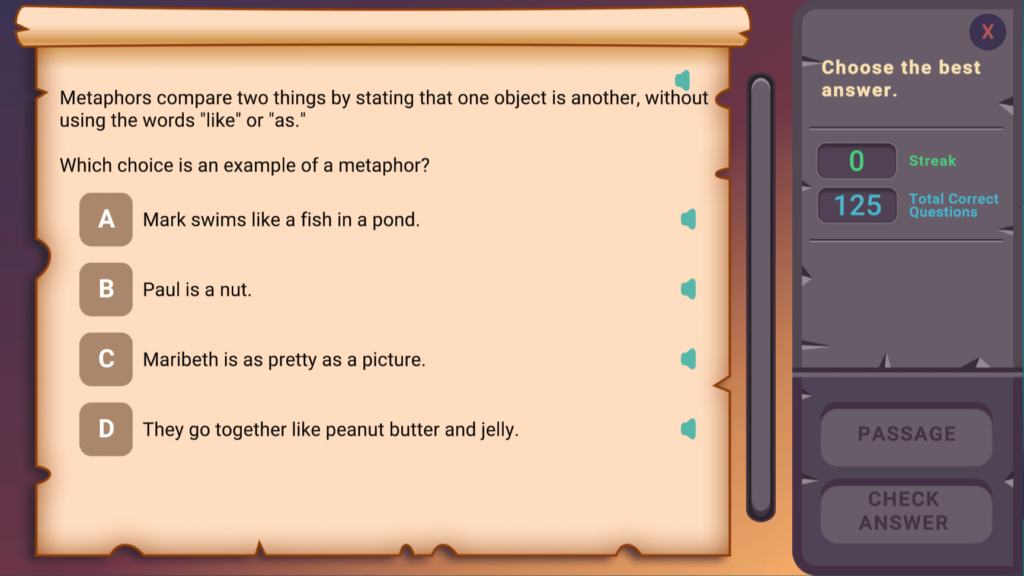
As students progress to Tier 2: Practicing, the questions no longer provide full information, but may provide some assistance. For example, a definition may be provided if the resulting answer is more nuanced. At this tier, students will be focusing on developing their ability to identify and use the skill on their own.
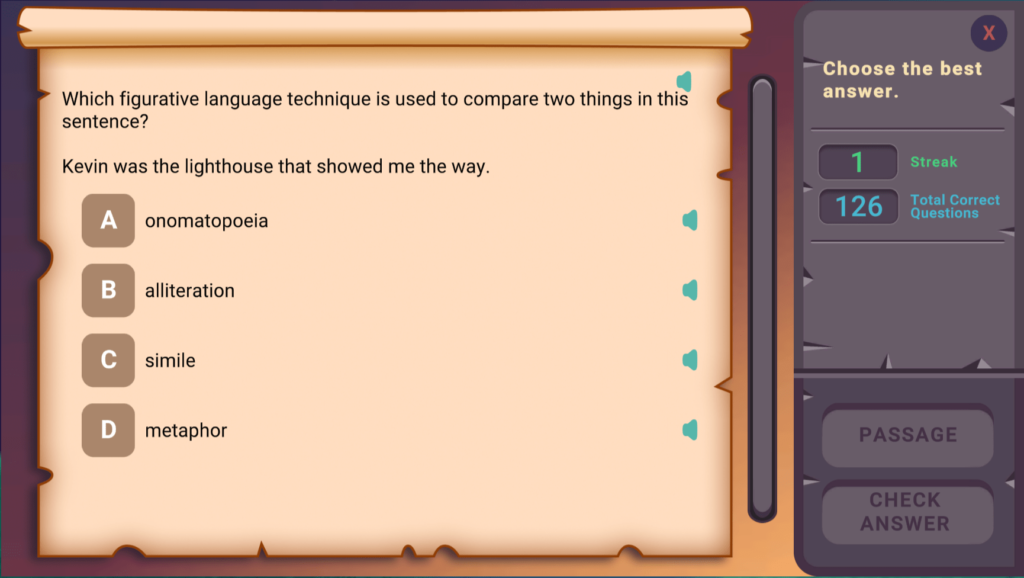
Finally, at Tier 3: Mastering, students are now expected to know the skill. Questions at this tier will involve stretching their ability to use the skill. Definitions will not be provided at this tier.
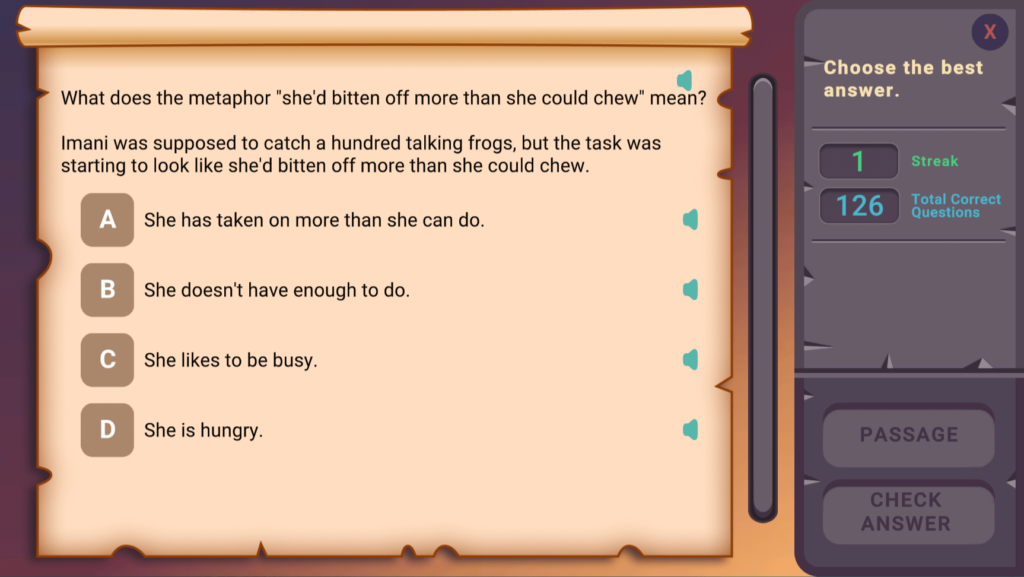
For every skill, we have developed a handy chart that explains what the skill is, how it is used at each tier, and examples of question stems students may encounter. For example, here is our chart for metaphors.
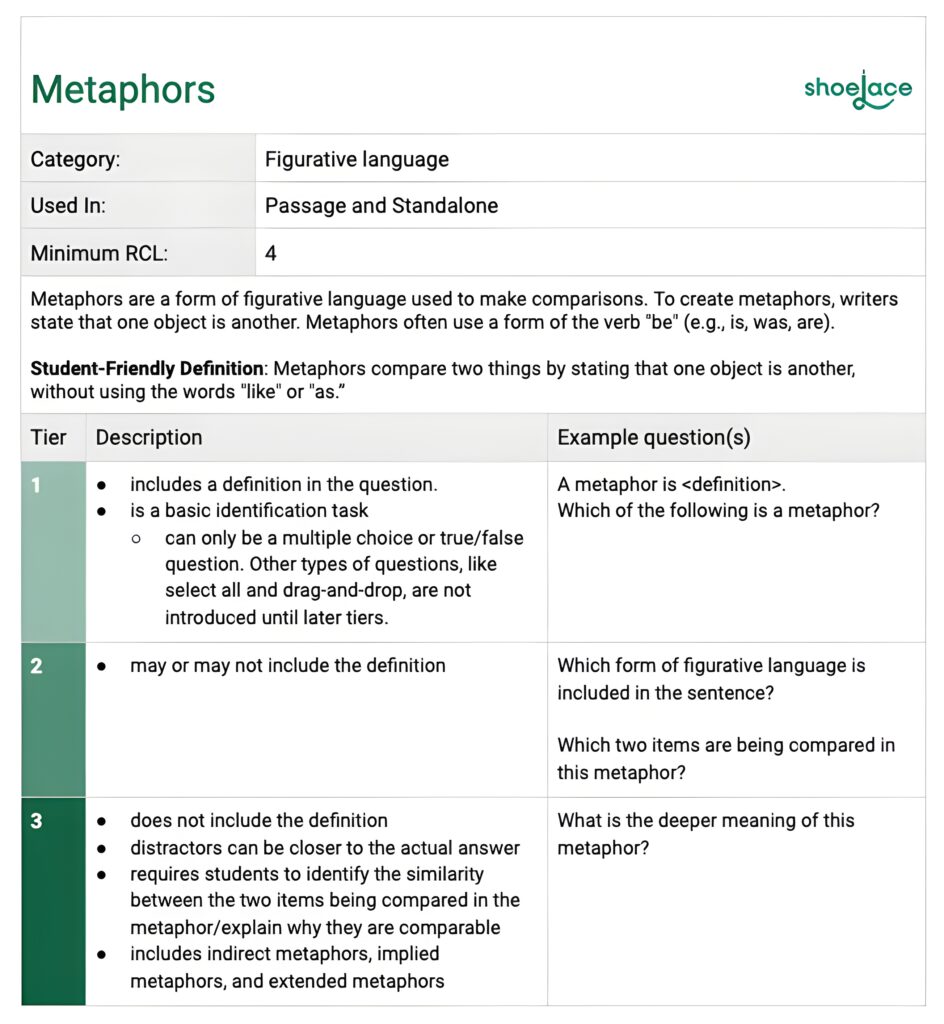
You can find our complete list of skills broken down by tiers here.
Categories
comments for this post are closed
